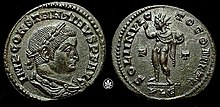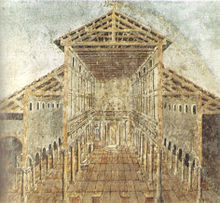A Brief History
On March 7, 321, Roman Emperor Constantine I decreed that dies Solis Invicti (‘sun-day,’ or Day of Sol Invictus, Roman God of the Sun) would be the Roman day of rest throughout the Roman Empire.
Digging Deeper
Constantine I became Emperor in 306 AD upon the death of his father, the reigning Emperor of the Western Roman Empire, Constantius I. Constantine had somewhere along the way adopted the Christianity practiced by his mother, Helena, though History is not clear exactly when this conversion took place. In 313, Constantine had removed all penalties for practicing Christianity and restored property and rights to those previously convicted of the illegal religion (Edict of Milan).

Though Sol Invictus (meaning ‘The unconquered Sun’) was indeed a pagan Roman God, and had been featured on Roman coins, Constantine coopted this pagan heritage along with the Judeo-Christian following of the 10 Commandments by granting a day to honor God and rest for man. As the Roman Empire gradually converted to Christianity, Sunday became the natural day for the Sabbath and rest since Romans were already accustomed to Sunday as their day off.

Constantine continued to keep Sol on Roman coins after 321, and in 323 he decreed that Christians were not allowed to participate in pagan Roman sacrifice. Constantine strove for religious standardization (orthodoxy) and prescribed various rules during the transformation of Rome to Christianity, including using the Julian calendar in preference to the Hebrew calendar, just one of many signs of supporting the Christian faith. Jews were outlawed from owning Christian slaves and from attempting to convert Christians to Judaism. Constantine dictated to the Bishops what dogma to use and ordered them to root out heresy, leaving a more consistent view of their religion.
Constantine ordered the building of the Church of the Holy Sepulchre be built on the site of a previous (2nd Century AD) Roman temple to Aphrodite/Venus, a temple allegedly built over the tomb/crypt of Jesus. Constantine’s mother traveled to the Holy Land and “discovered” the tomb of Christ, and thus the Church of the Holy Sepulchre was built. Constantine also had the Old Basilica of St. Peter built in Rome, which stood from the 4th to the 16th Century.

In 325 Constantine summoned the Council of Nicaea, one of the earliest important Christian councils that produced the Nicene Creed. From 331 to 336 Constantine had all gold, silver, and bronze statues confiscated from pagan temples and used to mint coins as a measure of economic need, but with the side effect of eliminating some of the pagan heritage. Also in 325, Constantine defeated Licinius, Emperor of the Eastern Roman Empire, and consolidated the entire empire under his own rule, establishing the city of Constantinople, previously known as Byzantium.

Little did Constantine know Sunday would come to mean football and all sorts of recreation, or that for many people, even Christians, it is just another day of work. Question for students (and subscribers): What activities do you prefer to do on Sunday? Please let us know in the comments section below this article.
If you liked this article and would like to receive notification of new articles, please feel welcome to subscribe to History and Headlines by liking us on Facebook and becoming one of our patrons!
Your readership is much appreciated!
Historical Evidence
For more information, please see…
Barnes, Timothy D. Constantine: Dynasty, Religion and Power in the Later Roman Empire. Wiley-Blackwell, 2013.

